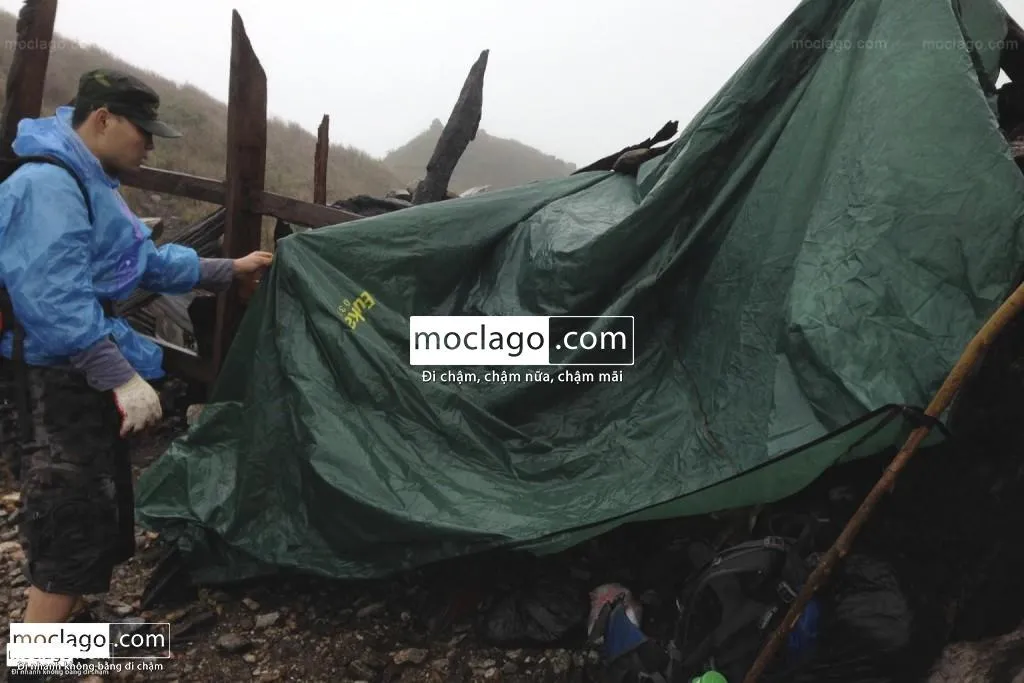Night hiking in Vietnam is becoming an increasingly popular trend for those who love exploration and adventure. However, alongside the memorable experiences, night hiking also carries potential risks. This article will share experiences, skills, and important notes to ensure you have a safe and fulfilling night hiking journey.
Why is Night Hiking So Appealing?
Night hiking offers a completely different perspective compared to daytime trekking. As night falls, the surroundings become magical and mysterious. You’ll witness a sky full of stars, feel the tranquility of the forest, and challenge your limits in the darkness.
However, this allure comes with potential dangers. Limited visibility, challenging terrain, and unpredictable weather can easily lead to getting lost, accidents, or health issues.
Night Hiking Experiences from Seasoned Trekkers
To have a safe and successful night hike, learning from the experiences of those who have gone before is crucial. Below are some lessons learned from real-life situations:
1. A Story of Overconfidence
A group of friends encountered trouble while hiking in bad weather conditions. Heavy rain and thick fog caused them to lose direction, lack warm clothing, and have insufficient local guides. Fortunately, they were rescued in time. This story serves as a warning against overconfidence when hiking, especially at night.
2. Lesson in Wayfinding Skills
During one hike, the author got lost in dense fog. Thanks to experience and a bit of luck, they found their way back. This experience highlights the importance of wayfinding skills when night hiking, especially in adverse weather conditions.

Starting a campfire for warmth is an essential survival skill when hiking in cold weather conditions.
3. The Importance of Staying Warm
On another occasion, the author suffered severe hypothermia after hours of rain exposure. Fortunately, having brought a tarp and solid fuel, they set up a makeshift shelter, warmed up, and changed into dry clothes to recover. This story emphasizes the importance of preparing adequate warm clothing and heat-retaining items for night hiking.
4. Experience in Choosing a Guide
During one trek, a group of friends got lost due to an inexperienced guide. Luckily, they found their way back after hours of searching. This experience shows that choosing a guide who is experienced and knowledgeable about the terrain is extremely important.
5. Lesson in Caution
A hiking group got lost while descending the mountain at night. They mistakenly crossed into China and only found their way back after hours of searching. This story serves as a reminder of caution when hiking, especially at night and in border areas.
What to Prepare for a Safe Night Hike?
To ensure safety on a night hike, you need to prepare thoroughly in terms of fitness, skills, and equipment. Here are some important considerations:
1. Physical Fitness Training
Night hiking requires better physical fitness than daytime hiking. Exercise regularly, especially exercises that enhance endurance and muscle strength.
2. Skill Equipment
Master basic hiking skills, map and compass skills, basic first aid skills, and wilderness survival skills.
3. Equipment Preparation
- Flashlight/Headlamp: A headlamp is indispensable for night hiking. Choose one with high brightness, wide beam range, and long battery life.
- Clothing: Prepare adequate warm clothing, rain gear, gloves, a woolen hat, and socks to keep your body warm.
- Hiking Boots: Choose boots with good grip, waterproofness, and comfort for movement.
- Backpack: Choose a backpack of appropriate size, with multiple compartments for storage and load-bearing straps to reduce shoulder strain.
- Food: Bring enough light, easily digestible, and energy-rich snacks such as bread, chocolate, nuts, and dried fruits.
- Water: Ensure you bring enough drinking water to avoid dehydration during the hike.
- Map and Compass: If you don’t have a guide, bring a map and compass to determine direction.
- First Aid Kit: Carry a basic first aid kit to treat minor injuries or common health issues.
- Rescue Whistle: Use a whistle to signal for help if in danger or lost.
- Power Bank: Bring a power bank for flashlights, phones, and other electronic devices.

Setting up a tarp to start a fire and regain body heat is a crucial measure when experiencing hypothermia.
Important Notes When Night Hiking
In addition to thorough preparation in terms of fitness, skills, and equipment, you also need to note the following to ensure safety during your night hike:
1. Choose a Suitable Location
Choose hiking locations with terrain that is not too rugged, with clear trails, and where local people are knowledgeable about the terrain.
2. Hike in Groups
Avoid hiking alone; go in groups to support each other when encountering difficulties.
3. Find a Guide
If you lack hiking experience, find a guide who is experienced and knowledgeable about the terrain.
4. Monitor the Weather
Monitor the weather forecast before going and be prepared for any adverse weather conditions that may occur.
5. Adhere to Safety Rules
Follow safety rules when hiking, do not go off-trail, do not climb in dangerous areas, and do not litter.
6. Stay Connected
Ensure you always have a way to communicate with others in the group and with the outside world.
7. Know Your Limits
Do not attempt to hike when feeling tired, unwell, or experiencing health issues.
Conclusion
Night hiking is a wonderful experience, but it also carries many risks. By preparing thoroughly, learning from the experiences of those who have gone before, and adhering to safety rules, you can fully enjoy the beauty of the mountains at night and have a memorable journey. Always remember, safety comes first.